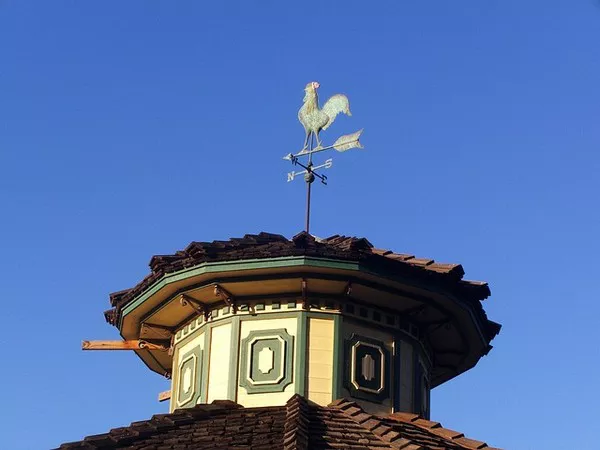In the fascinating world of meteorology, there are various instruments that help scientists measure and understand weather patterns. One such instrument, perfect for curious young minds, is the anemometer. An anemometer is a device designed to measure the speed and direction of the wind. This article aims to unravel the mysteries of anemometers for kids, shedding light on their importance and how they work.
Understanding Wind and Its Measurement:
Before delving into the intricacies of anemometers, it’s essential for kids to grasp the concept of wind. Wind is simply the movement of air from one place to another. It can be a gentle breeze or a powerful gust, and understanding its speed and direction is crucial for predicting weather changes.
Anemometers, often considered the superheroes of meteorological tools, come to the rescue by providing precise measurements of wind speed. These devices help meteorologists predict upcoming weather conditions, including storms, hurricanes, and even sunny days.
Types of Anemometers:
There are various types of anemometers, each designed to measure wind speed in its unique way. Explaining these types in kid-friendly terms can make the learning experience enjoyable and engaging.
Cup Anemometers:
One of the simplest and most common types, cup anemometers consist of three or four cups attached to the ends of horizontal arms. As the wind blows, the cups rotate, and the speed of rotation is directly proportional to the wind speed. The faster the cups spin, the stronger the wind.
Vane Anemometers:
Vane anemometers have a vertical rod with a flat plate or vane at one end. The vane aligns itself with the wind direction, and the angle it makes with the rod indicates the wind’s strength. Kids can imagine the vane as a weather vane found on rooftops, pointing in the direction from which the wind is blowing.
Sonic Anemometers:
Sonic anemometers use ultrasonic sound waves to measure wind speed and direction. Kids can think of them as instruments that “listen” to the wind. By calculating the time it takes for sound waves to travel between multiple sensors, these anemometers determine wind speed and direction accurately.
How Anemometers Work:
Now that we know the types, let’s explore how these fascinating devices actually work.
Cup Anemometers: Imagine being on a playground carousel. When it’s windy, the cups on the anemometer act like the seats on the carousel. The wind pushes the cups, making the anemometer spin just like you would spin on the carousel. The faster it spins, the stronger the wind.
Vane Anemometers: Picture an arrow pointing in the direction the wind is blowing. The vane on the anemometer does the same thing. It turns and points in the direction the wind is coming from. The more it turns, the stronger the wind.
Sonic Anemometers: Think of sonic anemometers as superhero listeners. They have special sensors that send and receive ultrasonic sound waves. When the wind blows, it makes these sound waves travel faster or slower. The anemometer listens to these changes and figures out how fast and from which direction the wind is blowing.
Why Anemometers Matter:
Understanding the wind is crucial for predicting weather patterns. Anemometers play a pivotal role in this process by providing accurate measurements. Here’s why they matter:
Weather Predictions: Meteorologists use anemometer data to predict weather conditions. By knowing the wind speed and direction, they can anticipate storms, hurricanes, and other weather events, helping communities prepare and stay safe.
Renewable Energy: Anemometers are also essential in the field of renewable energy, especially wind power. Before setting up wind turbines, engineers use anemometers to study wind patterns and determine the best locations for harnessing wind energy.
Flight Safety: Anemometers are crucial for aviation safety. Pilots rely on accurate wind speed and direction information to navigate through the skies safely. Understanding the wind helps prevent turbulence-related incidents.
Educational Activities for Kids:
Learning about anemometers can be a fun and interactive experience for kids. Here are some educational activities to make the exploration even more enjoyable:
DIY Cup Anemometer: Create a simple cup anemometer using paper cups, straws, and a pencil. Kids can decorate the cups and watch their homemade anemometer spin in the wind.
Wind Direction Compass: Make a wind direction compass by attaching a vane to a pencil. Place it outside and observe how it aligns itself with the wind. Kids can use this compass to determine the wind direction in their area.
Sound Wave Experiment: Explore the concept of sonic anemometers by conducting a sound wave experiment. Use a fan to create wind, and have kids listen to changes in sound as the wind speed varies.
Conclusion:
In the world of meteorology, anemometers play a crucial role in helping scientists understand and predict the whims of the wind. For kids with a curious mind, learning about anemometers can be an exciting journey filled with DIY projects and engaging experiments. As they grasp the importance of these devices, they may find themselves looking at the wind in a whole new light – appreciating the science behind the gentle breeze that rustles the leaves or the strong gusts that make kites soar high in the sky.

